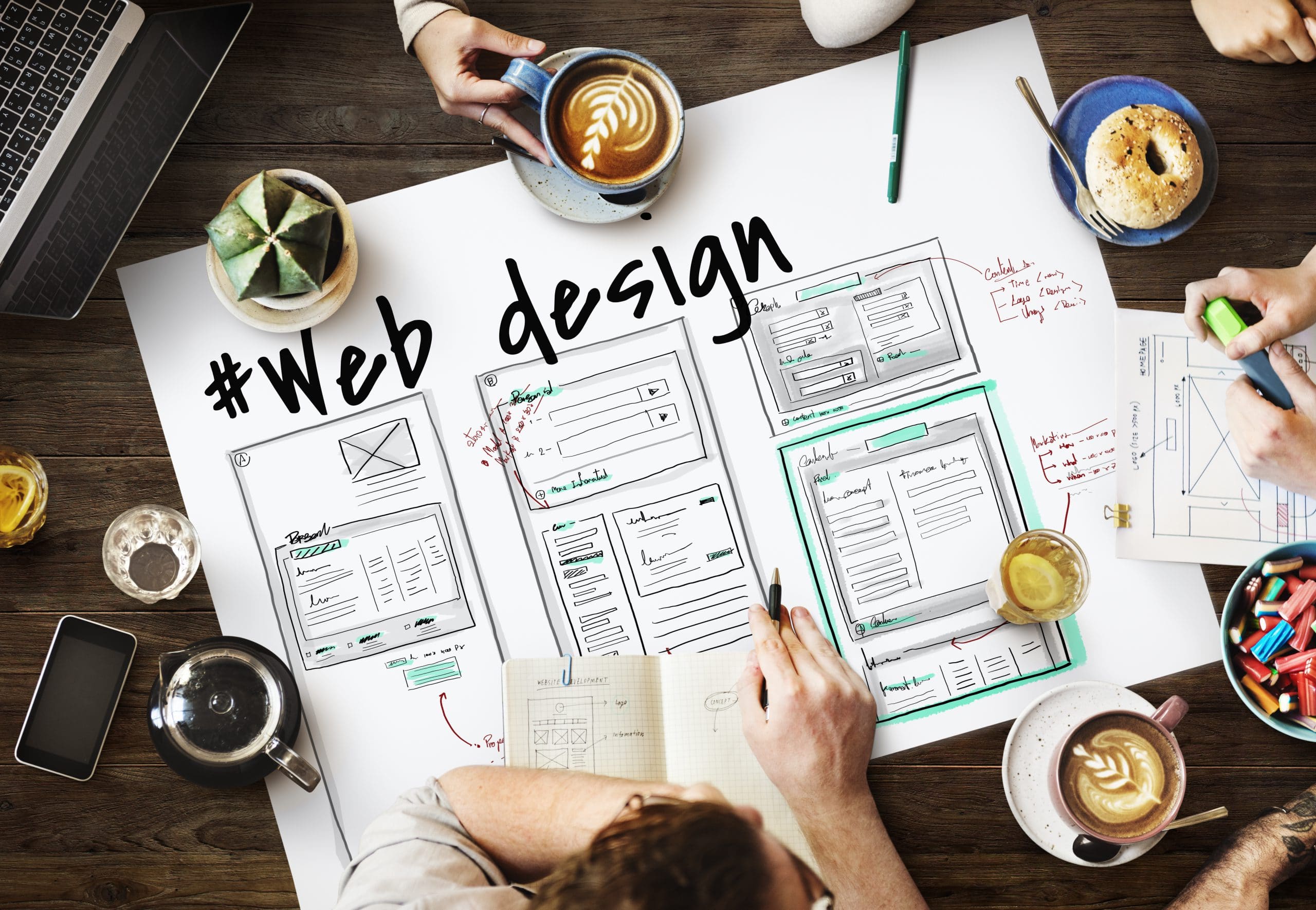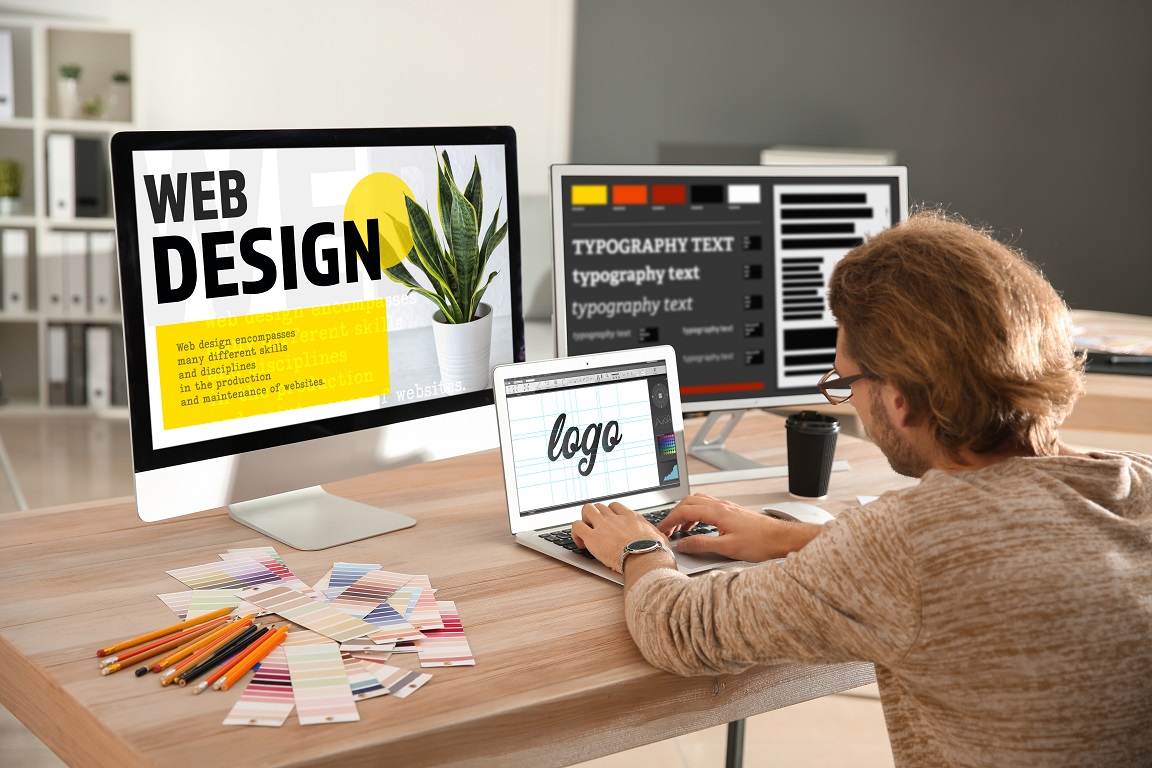The Important Components of Efficient Web Design: A Comprehensive Guide
Effective web Design incorporates numerous crucial aspects that substantially effect user experience. It requires mindful consideration of variables such as mobile responsiveness, user-friendly navigating, and aesthetic hierarchy. Each component plays a crucial function in crafting a website that not just draws in site visitors but also maintains them. Comprehending these foundational elements is vital for organizations aiming to improve their on the internet visibility. Yet, what absolutely differentiates a successful website from its competitors?
Understanding Individual Experience (UX) Design
User experience (UX) Design acts as the foundation of effective web Design, focusing on how customers connect with a web site. It encompasses various elements, consisting of functionality, ease of access, and overall fulfillment. A successful UX Design begins with individual study, identifying the target audience's behaviors and needs. Wireframes and prototypes are after that developed to imagine the website's framework and circulation. Website Design Klerksdorp. Examining with real customers supplies important understandings, enabling designers to boost and improve the interface navigating. Visual Design components, such as typography and color pattern, boost the general visual while sustaining functionality. Inevitably, efficient UX Design guarantees that individuals can conveniently achieve their objectives, cultivating interaction and commitment. By prioritizing user experience, sites can attain higher conversion prices and a favorable online reputation
Relevance of Mobile Responsiveness
As mobile gadgets increasingly dominate net usage, making certain mobile responsiveness has ended up being vital for reliable internet Design. Sites that are not maximized for mobile can lead to a bad customer experience, resulting in higher bounce rates and shed opportunities. A mobile-responsive Design enables material to adjust perfectly to numerous screen sizes, making certain that customers can access information conveniently, despite the device they utilize. Additionally, internet search engine focus on mobile-friendly sites in their rankings, making responsiveness a crucial aspect for presence and web traffic. With an expanding variety of individuals accessing the net using smartphones and tablets, businesses must purchase mobile responsiveness to enhance individual interaction, enhance brand name perception, and ultimately drive conversions. Effective website design should prioritize mobile responsiveness to remain affordable in today's electronic landscape.
Crafting User-friendly Navigating
Navigating acts as the backbone of any type of efficient site, directing site visitors with web content effortlessly. An intuitive navigation framework improves user experience by allowing individuals to discover information quickly and efficiently. Clear labeling of menu things is crucial; it ought to reflect the content precisely, preventing jargon that might confuse individuals. Furthermore, a logical hierarchy is crucial, making it possible for customers to recognize connections in between different areas. Uniformity across pages aids strengthen assumptions, while breadcrumbs provide context and a feeling of direction. Receptive navigating menus that adjust to different devices better enhance accessibility. Ultimately, the objective is to develop a seamless trip for visitors, guaranteeing they can check out the site without aggravation, bring about a much more involved and satisfied audience.
Using Aesthetic Hierarchy
Aesthetic pecking order plays an essential role in web Design by guiding customers' focus and boosting their experience. Effective format strategies, together with thoughtful selections in color and typography, can greatly affect exactly how information is perceived and refined. Understanding these components is crucial for producing visually attractive and functional web sites.
Relevance of Visual Pecking Order
Effective web Design hinges on the concept of visual pecking order, which overviews customers via web content in a sensible and user-friendly manner. This concept is essential for boosting user experience, as it aids focus on info and guides attention to essential aspects. By establishing a clear pecking order, web developers can guarantee that users conveniently identify vital messages, calls to activity, and navigating alternatives. A well-structured aesthetic power structure minimizes cognitive tons, enabling users to refine information efficiently. In addition, it promotes involvement by creating an appealing layout that invites expedition. Inevitably, comprehending the value of aesthetic hierarchy is essential for any internet developer intending to develop effective and easy to use web sites that successfully connect their designated messages.

Methods for Efficient Design
An efficient design works as the foundation of any type of successful web Design, allowing users to effortlessly browse via web content. Efficient methods include grid systems, which offer a structured framework for aligning components, assuring consistency and equilibrium. In addition, utilizing whitespace tactically can enhance emphasis on crucial areas, reducing aesthetic clutter and directing user focus. Prioritizing content via dimension and placement better stresses crucial information, while different aspects can create a clear visual power structure. Implementing receptive Design strategies warranties formats adjust effortlessly throughout gadgets, keeping usability. Finally, incorporating instinctive navigating help, such as switches and menus, improves customer experience, making it simpler for visitors to find relevant info quickly. Together, these techniques develop the foundation of an effective internet layout.
Color and Typography Choices
While shade and typography selections might look like straightforward Design aspects, they play an essential function in developing aesthetic power structure on a web site (Web Design Johannesburg). Color can guide individuals' attention, distinguish sections, and communicate brand name identification. By purposefully making use of contrasting colors, designers can highlight essential calls to action, guaranteeing they attract attention. Typography, on the various other hand, affects readability and individual interaction. A well-chosen typeface can communicate tone and personality, while varying font dimensions and weights can create a clear framework. Larger, bolder headings attract interest, while smaller sized body message gives comprehensive info. With each other, reliable shade and typography choices learn the facts here now produce a natural aesthetic experience, leading customers via the web content easily and improving total usability
Choosing the Right Color Design
Just how does one pick the suitable shade scheme for a site? Picking the ideal color pattern is important for boosting individual experience and conveying the brand name's message. Designers must start by taking into consideration the target audience and the feelings that different shades stimulate. Blue usually signifies depend on, while red can create necessity. It is vital to limit the scheme to a couple of complementary shades to maintain aesthetic consistency and stay clear of overwhelming users. Making use of tools like shade wheel applications can help in picking shades that work well with each other. Additionally, developers have to ensure that there suffices comparison in between text and background colors for readability. Inevitably, a well-balanced shade system can greatly influence a website's efficiency and user interaction.
Including Involving Content

Involving content is crucial for preserving the attention and capturing of web site site visitors. It works as a bridge between the website's Design and the individual's experience, cultivating much deeper connections. Effective web content often consists of a mix of interesting articles, charming visuals, and interactive components that motivate individual engagement. By using storytelling methods, web sites can evoke emotions, making the material more relatable and unforgettable. In addition, including user-generated material, such as endorsements or evaluations, enhances credibility and develops depend on with the audience. Clear calls-to-action overview users towards wanted results, ensuring they remain involved. On the whole, a critical strategy to content growth not just enhances individual experience but also drives conversions, making it a vital facet of efficient web Design.
Maximizing for Rate and Performance
Optimizing for rate and efficiency is vital for boosting user experience on a site. Methods such as picture compression, minifying CSS and JavaScript, and leveraging web browser caching can considerably lower loading times - Web Design South Africa. These methods not just improve efficiency yet also add to much better search engine positions
Image Compression Techniques

Minifying CSS and JavaScript
Many internet designers focus on picture optimization, minifying CSS and JavaScript is equally vital for boosting web site rate and performance. Minification includes getting rid of unneeded personalities from code, such as whitespace, comments, and formatting, without affecting its functionality. This process causes smaller sized data sizes, which causes much faster packing times and improved customer experience. By reducing the quantity of information moved between the web server and the customer, minification assists decrease bandwidth use and improves general site efficiency. Furthermore, internet search engine prefer much faster internet sites, which can enhance search positions. Carrying out devices and automated procedures for minifying these manuscripts can simplify internet advancement and maintenance, making certain that efficiency remains a concern throughout the lifecycle of a site.
Leveraging Web Browser Caching
Leveraging browser caching substantially improves website speed and performance by storing regularly accessed sources locally on a customer's gadget. This practice decreases the requirement for repeated demands to the server, significantly decreasing filling times for returning visitors. By using HTTP headers, internet designers can specify caching policies for various sources, such as stylesheets, manuscripts, and pictures. Properly implemented caching approaches permit users to experience faster web page lots, resulting in enhanced individual satisfaction and engagement. Furthermore, online search engine prefer web sites with enhanced efficiency, possibly boosting search positions. Routinely handling and reviewing cache settings visit this page guarantees that users receive updated content while still taking advantage of the efficiency of cached sources. To conclude, effective browser caching is a necessary component of optimizing web efficiency.
Often Asked Inquiries
Just how Do I Pick the Right Website Design Tools?

Selecting the best website design tools involves evaluating job demands, understanding customer demands, and examining different software features. Compatibility, convenience of usage, and neighborhood support are also vital factors to take into consideration for reliable Design outcomes.
What Prevail Website Design Blunders to Prevent?
Usual website design blunders to stay clear of consist of cluttered designs, poor navigating, inadequate mobile responsiveness, sluggish loading times, and ignoring individual experience. Efficient designs prioritize capability, access, and simpleness to engage customers and improve complete satisfaction.
Just How Can I Gauge My Website's Success?
To determine a website's success, one may evaluate metrics such as traffic, conversion rates, customer engagement, and bounce prices. Making use of tools like Google Analytics can give valuable insights for continuous optimization and improvement approaches.
What Duty Does SEO Play in Web Design?
Search engine optimization substantially influences website design by making sure that websites are structured for internet search engine presence. This includes optimizing site rate, mobile responsiveness, and content high quality, inevitably enhancing user experience and driving natural traffic.
How Commonly Should I Update My Web Site Design?
The frequency of web site Design updates depends upon industry fads, individual feedback, and technical innovations. Commonly, a refresh every 2-3 years is recommended, guaranteeing the site stays pertinent and aligned with present criteria and individual assumptions.
Individual experience (UX) Design offers as the backbone of reliable internet Design, concentrating on how users connect with an internet site. With special info an expanding number of customers accessing the internet through tablets and mobile phones, organizations have to spend in mobile responsiveness to improve customer involvement, boost brand name perception, and inevitably drive conversions. An user-friendly navigating structure improves user experience by allowing individuals to discover details promptly and efficiently. Properly implemented caching techniques enable individuals to experience faster page lots, resulting in enhanced individual contentment and engagement. The regularity of web site Design updates depends on sector patterns, customer feedback, and technological improvements.